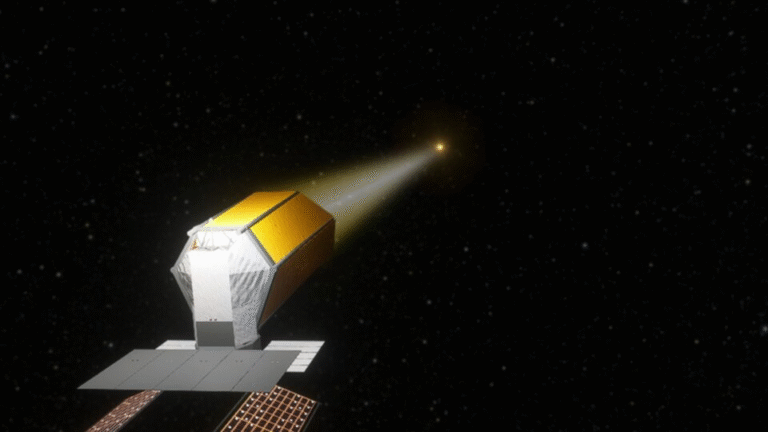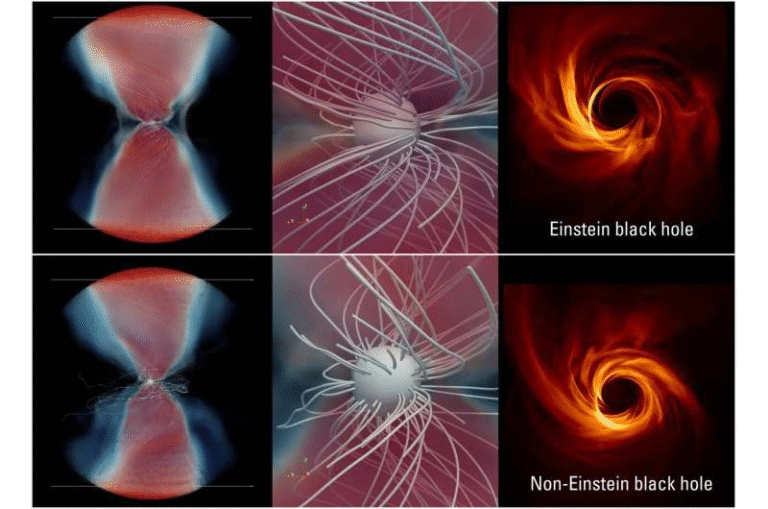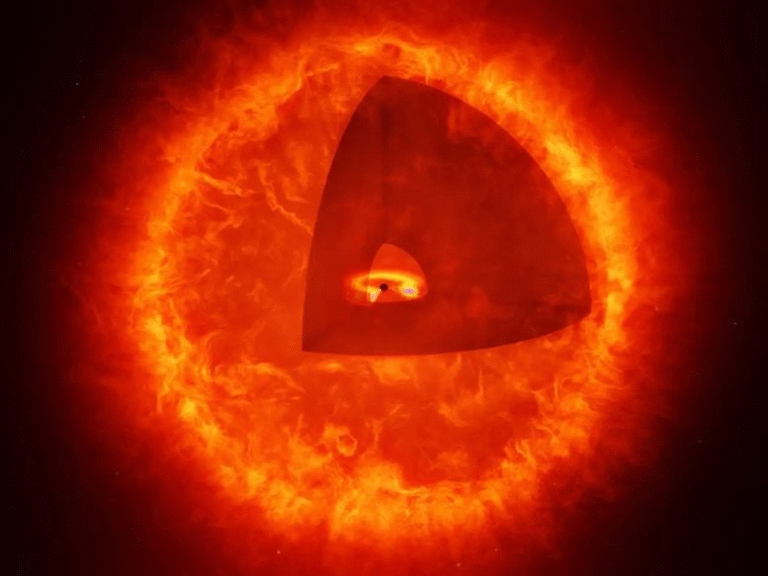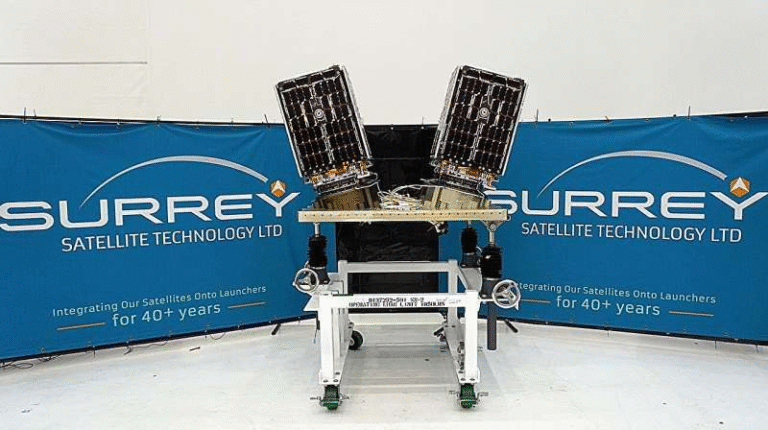Titan’s Atmosphere Is Wobbling Like a Gyroscope – A Strange Discovery That Could Shape Future Exploration

Saturn’s largest moon, Titan, has long fascinated scientists for being the only moon in our Solar System with a thick, Earth-like atmosphere. But now, researchers from the University of Bristol have uncovered something very unusual: Titan’s atmosphere does not rotate in lockstep with the moon’s surface. Instead, it tilts and wobbles like a gyroscope, drifting with the seasons.
This new behavior, revealed through a detailed analysis of data from the Cassini-Huygens mission, opens up fresh questions about Titan’s dynamics and what it means for future missions, including NASA’s upcoming Dragonfly rotorcraft.
Let’s dive into the details of what scientists found, how they found it, and why it matters.
What Exactly Was Discovered?
The research team analyzed 13 years of thermal infrared measurements from Cassini’s Composite Infrared Spectrometer (CIRS), collected between 2004 and 2017. By mapping Titan’s stratospheric temperatures, they found that the atmosphere isn’t perfectly aligned with Titan’s pole. Instead, it appears to lean away from the axis and drift over time, a bit like a spinning top that isn’t perfectly balanced.
This “wobble” means that Titan’s atmosphere is acting like a gyroscope, maintaining a tilt independent of the moon’s surface. What’s even more intriguing is that while the magnitude of the tilt changes seasonally, the direction of the tilt remains fixed in space. That is puzzling, because scientists expected forces like the Sun’s heating or Saturn’s gravitational pull to influence the orientation. Instead, the atmosphere seems to have a strange stability that isn’t yet understood.
Seasonal Changes and Titan’s Long Year
Unlike Earth, Titan’s seasonal cycles are extremely drawn out. One Titan year lasts almost 30 Earth years, which means that changes in the atmosphere unfold slowly. By following Cassini’s long-term data, researchers observed that Titan’s atmospheric tilt grows and shrinks in sync with these extended seasons.
The discovery adds a new layer to our understanding of Titan’s climate. Scientists already knew that Titan’s stratosphere undergoes temperature shifts with the seasons, but now they can see that the entire axis of the atmosphere itself shifts as well.
How Did This Happen?
One possibility is that some event in Titan’s distant past knocked the atmosphere off its spin axis, causing it to oscillate. However, no clear cause has been identified. Impacts, internal structural changes, or unknown interactions could be responsible.
The biggest mystery is why the tilt direction stays fixed in space instead of rotating or drifting as expected. Normally, solar heating, Saturn’s influence, or general atmospheric circulation would tug on the orientation over time. The fact that it doesn’t budge suggests something unusual is anchoring it, or that Titan’s atmosphere has hidden stabilizing mechanisms.
Why This Matters for Dragonfly
NASA’s Dragonfly mission, scheduled to launch in 2028 and arrive in the 2030s, will send a drone-like rotorcraft to Titan. This vehicle will descend through Titan’s dense atmosphere and fly across the moon’s surface to study its chemistry, climate, and potential for habitability.
The new findings are directly relevant to Dragonfly because Titan’s winds are extremely fast, moving around 20 times faster than the moon’s rotation. If the entire atmosphere is tilted and drifting, it could affect how Dragonfly is carried during descent and flight. Mission planners need to understand this wobble to accurately model landing trajectories, predict drift patterns, and ensure the rotorcraft touches down in the intended location.
In short, without accounting for Titan’s atmospheric wobble, Dragonfly could end up landing far from where engineers expect.
Titan’s Unique Atmosphere
Titan’s atmosphere has been a source of fascination for decades. Here are some important details to provide context:
- Composition: Titan’s air is primarily nitrogen (like Earth’s), but it also contains significant amounts of methane and hydrocarbons. These molecules form complex chemical reactions, producing organic compounds that rain down on the surface.
- Haze: The thick, orange-brown haze that shrouds Titan is the result of these organic aerosols suspended in the atmosphere. This haze makes it difficult to see the surface directly in visible light.
- Weather: Titan has an active methane cycle, similar to Earth’s water cycle. Methane evaporates, forms clouds, and falls as methane rain, carving rivers and lakes into the surface.
- Surface Pressure and Temperature: Titan’s surface pressure is about 1.5 times Earth’s, and the temperature is a frigid –179°C (–290°F). This makes liquid methane and ethane stable on the surface, forming seas and lakes.
The atmosphere’s behavior is central to Titan’s Earth-like qualities, and this new discovery adds yet another strange twist to its complexity.
What Cassini Already Taught Us
Before this wobble was discovered, the Cassini-Huygens mission had already revolutionized our knowledge of Titan. Some of the highlights include:
- The Huygens probe, which landed on Titan in 2005, confirmed that Titan has rivers, channels, and a landscape shaped by liquid methane.
- Cassini observed polar vortices, massive atmospheric whirlpools that develop and evolve with the seasons.
- Detailed mapping revealed vast methane seas near Titan’s poles, some larger than the Great Lakes on Earth.
- Cassini’s radar instruments penetrated the haze, showing that Titan’s surface has dunes, mountains, and possible cryovolcanoes.
The new wobble discovery shows that even years after Cassini’s mission ended, its data is still producing unexpected scientific breakthroughs.
What Makes Titan Stand Out Among Moons
Titan is unique in many ways compared to other moons in the Solar System:
- Thick atmosphere – No other moon has such a dense and dynamic atmosphere.
- Surface liquids – Titan is the only known world besides Earth with stable surface liquids, although they are methane and ethane instead of water.
- Organic chemistry – The complex interactions in Titan’s air may resemble the early chemistry that once took place on Earth before life began.
- Habitability potential – While too cold for life as we know it, Titan offers a natural laboratory for studying prebiotic chemistry.
This new finding about the wobbling atmosphere reinforces Titan’s status as a truly alien world, one that both resembles Earth and defies our expectations.
Broader Significance for Planetary Science
Understanding Titan’s atmosphere isn’t just about preparing for future missions. It also broadens our knowledge of how atmospheres behave in general.
- Comparisons with Earth: Earth’s atmosphere is tightly coupled with its surface, but Titan shows that atmospheres can behave differently, even when conditions appear similar.
- Atmospheric dynamics: The gyroscopic-like wobble challenges existing models of how rotation, angular momentum, and external forces influence a planet or moon’s climate.
- Exoplanet studies: Titan could serve as a model for distant exoplanets with thick atmospheres, where similar decoupling effects might occur.
This discovery emphasizes that the Solar System still has surprises waiting, even in data from missions that ended years ago.
What’s Next?
The research team’s findings raise many new questions:
- What specifically caused Titan’s atmosphere to wobble?
- Why does the tilt direction remain fixed in space?
- How does this behavior interact with deeper atmospheric layers and Titan’s surface processes?
- Will the wobble remain consistent over a full Titan year, or could it change in unexpected ways?
Future observations, models, and eventually Dragonfly’s data will help address these mysteries. Until then, Titan remains one of the most compelling worlds for planetary exploration.
Conclusion
Titan’s atmosphere is doing something very unusual: it’s wobbling like a gyroscope, tilting and drifting with the seasons but maintaining a stable direction in space. This strange behavior, revealed through Cassini’s long-term observations, not only deepens Titan’s mystery but also has practical consequences for future missions.
As scientists continue to re-examine Cassini’s treasure trove of data, discoveries like this show why Titan remains one of the most intriguing destinations in our Solar System. With Dragonfly on the horizon, understanding Titan’s atmospheric wobble will be crucial for safe exploration—and it may even teach us more about atmospheres across the universe.
Research Reference: Seasonal Evolution of Titan’s Stratospheric Tilt and Temperature Field at High Resolution from Cassini/CIRS – The Planetary Science Journal (2025)




